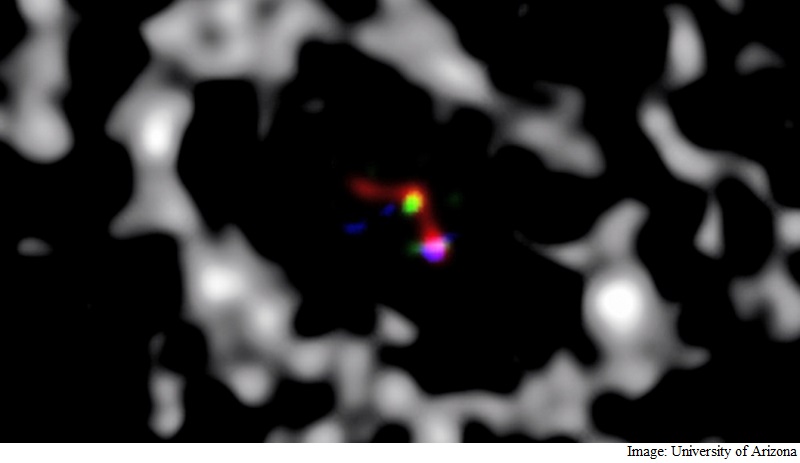- Home
- Social networking
- Social networking News
- Astronomers See Planet Still Growing in Its Stellar Womb
Astronomers See Planet Still Growing in Its Stellar Womb

Astronomers used a telescope in Arizona to peer at a young star located about 450 light-years away in the constellation Taurus.
The star, known as LkCa 15, is similar to the sun, but only 2 million years old.
Unlike the 4.6 billion-year-old sun, LkCa 15 is still surrounded by a disk of gas and dust, the raw materials for planet building. Within the disk is a big gap, some 50 times wider than distance between Earth and the sun.
Astronomers previously suspected that a giant planet was orbiting in the gap. Research published in this week's issue of the journal Nature confirms the find with infrared images of the planet, along with what appear to be one or two sibling planets.
Scientists also for the first time discovered the chemical footprints of superheated hydrogen gas streaming from the dust disk onto the planet, evidence that it is still forming, said Stephanie Sallum, a University of Arizona astronomy graduate student who led the team.
"This young system provides the first opportunity to study planet formation and disk-planet interactions directly," Sallum and colleagues wrote in Nature.
Of the nearly 2,000 confirmed planets discovered beyond the solar system, none are still in the formation stage.
In a related commentary also published in Nature, Princeton University astrophysicist Zhaohuan Zhu said the discovery will help scientists hone their theories about how planets are formed.
For example, more work is needed to explain the giant planet's location and why it is still growing. Scientists also cannot account for how the planet is generating the massive magnetic fields that are believed to be responsible for super-charging its hydrogen gas feeding lines.
The discovery also demonstrates a technique to find other baby planets by searching for the telltale hydrogen gas emissions.
© Thomson Reuters 2015
For the latest tech news and reviews, follow Gadgets 360 on X, Facebook, WhatsApp, Threads and Google News. For the latest videos on gadgets and tech, subscribe to our YouTube channel. If you want to know everything about top influencers, follow our in-house Who'sThat360 on Instagram and YouTube.
Related Stories
- Samsung Galaxy Unpacked 2025
- ChatGPT
- Redmi Note 14 Pro+
- iPhone 16
- Apple Vision Pro
- Oneplus 12
- OnePlus Nord CE 3 Lite 5G
- iPhone 13
- Xiaomi 14 Pro
- Oppo Find N3
- Tecno Spark Go (2023)
- Realme V30
- Best Phones Under 25000
- Samsung Galaxy S24 Series
- Cryptocurrency
- iQoo 12
- Samsung Galaxy S24 Ultra
- Giottus
- Samsung Galaxy Z Flip 5
- Apple 'Scary Fast'
- Housefull 5
- GoPro Hero 12 Black Review
- Invincible Season 2
- JioGlass
- HD Ready TV
- Laptop Under 50000
- Smartwatch Under 10000
- Latest Mobile Phones
- Compare Phones
- Moto G15 Power
- Moto G15
- Realme 14x 5G
- Poco M7 Pro 5G
- Poco C75 5G
- Vivo Y300 (China)
- HMD Arc
- Lava Blaze Duo 5G
- Asus Zenbook S 14
- MacBook Pro 16-inch (M4 Max, 2024)
- Honor Pad V9
- Tecno Megapad 11
- Redmi Watch 5
- Huawei Watch Ultimate Design
- Sony 65 Inches Ultra HD (4K) LED Smart TV (KD-65X74L)
- TCL 55 Inches Ultra HD (4K) LED Smart TV (55C61B)
- Sony PlayStation 5 Pro
- Sony PlayStation 5 Slim Digital Edition
- Blue Star 1.5 Ton 3 Star Inverter Split AC (IC318DNUHC)
- Blue Star 1.5 Ton 3 Star Inverter Split AC (IA318VKU)

















